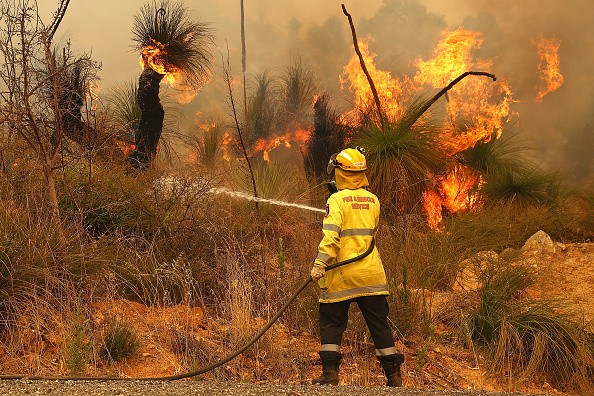The number of large wildfires in the U.S. so far in 2021 is the highest through late June in 10 years, with the most active months usually still upcoming in what could turn into a record year for fires.

Large Wildfires in the United States
According to the National Interagency Fire Center in Boise, Idaho, through June 21, there have been 28,926 large wildfires in the United States in 2021. This is around 4,000 more wildfires than normal, and the highest number of wildfires to date in any year since 2011.
The NIFC describes a large wildfire as one with a size that's not less than 100 acres in timber, at least 300 acres in grass or brush, or needs a larger firefighting response from a helicopter, for instance.
The NIFC increased the National Wildland Fire Preparedness Level to 4 on a scale of 1 to 5 on Tuesday. This day-to-day index is meant to give perspective to how widespread the ongoing fires are, how risky fire weather conditions are, and firefighting resources availability. It was the second-earliest date they had increased the preparedness level to 4 since 1990.
Also Read : Over 80 Percent of All Wildfires in the Past 20 Years Were Caused by Humans, Study Shows
Places Affected by Wildfires
It was only the fourth year they had done this in June, joining 2002, 2008 and 2012, according to the NIFC's daily report Tuesday. June has been specifically active. Evacuations had been ordered because of wildfires in not less than 17 different places so far in June, including earlier in the month close to Spokane, Washington; Reno, Nevada; Globe, Arizona; Dalles, Oregon; and Cedar City, Utah.
So far, the high number of wildfires this 2021 haven't covered as much ground as in recent years. Just more than 1 million acres have been charred so far this year. That's only two-thirds of the normal to date of just more than 1.6 million acres from 2011 through 2020. It's well behind the great 4.5 million-acre pace from 2011.

Widespread Drought in the West
According to the Drought Monitor analysis, the West was undergoing its most widespread drought in over 17 years as of mid-June. This massive drought was a result of a combination of a lack of summer monsoon thunderstorms in 2020 and a dry winter and spring into 2021 afterward.
Meager mountain snowpack liquefied early and largely evaporated out of closeby soil, instead of recharging rivers and reservoirs. Also, vegetation dried out much earlier in the spring. Then a combination of low humidity, strong winds, and searing heat arrive later in May and June in the West.
Throw in scattered thunderstorms bringing about little rain - but shifting winds and lightning strikes - and you have a recipe for beginning large wildfires. We're approaching the peak time of year for wildfires in the United States.
For more news, updates about wildfires and similar topics don't forget to follow Nature World News!
© 2025 NatureWorldNews.com All rights reserved. Do not reproduce without permission.





